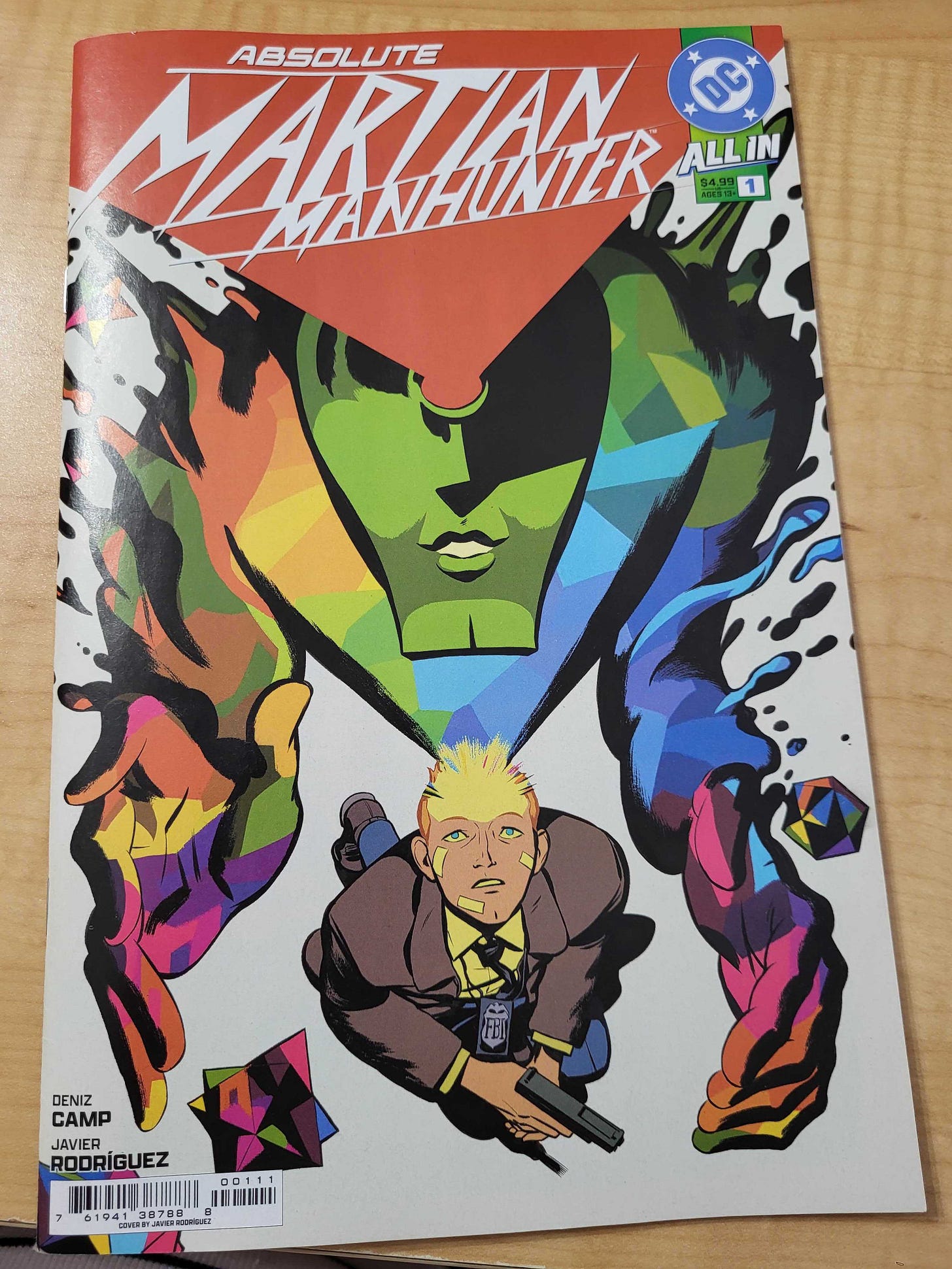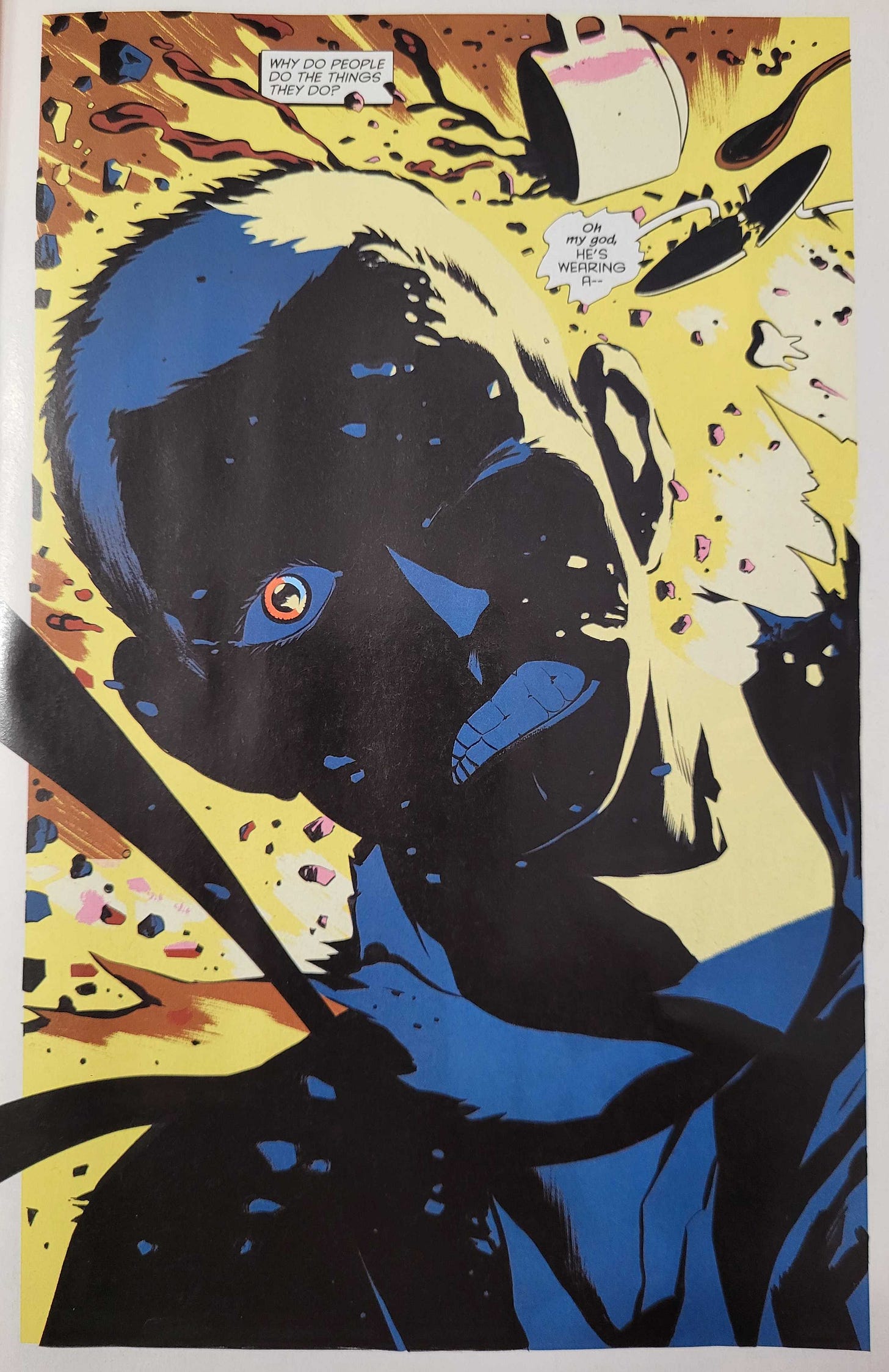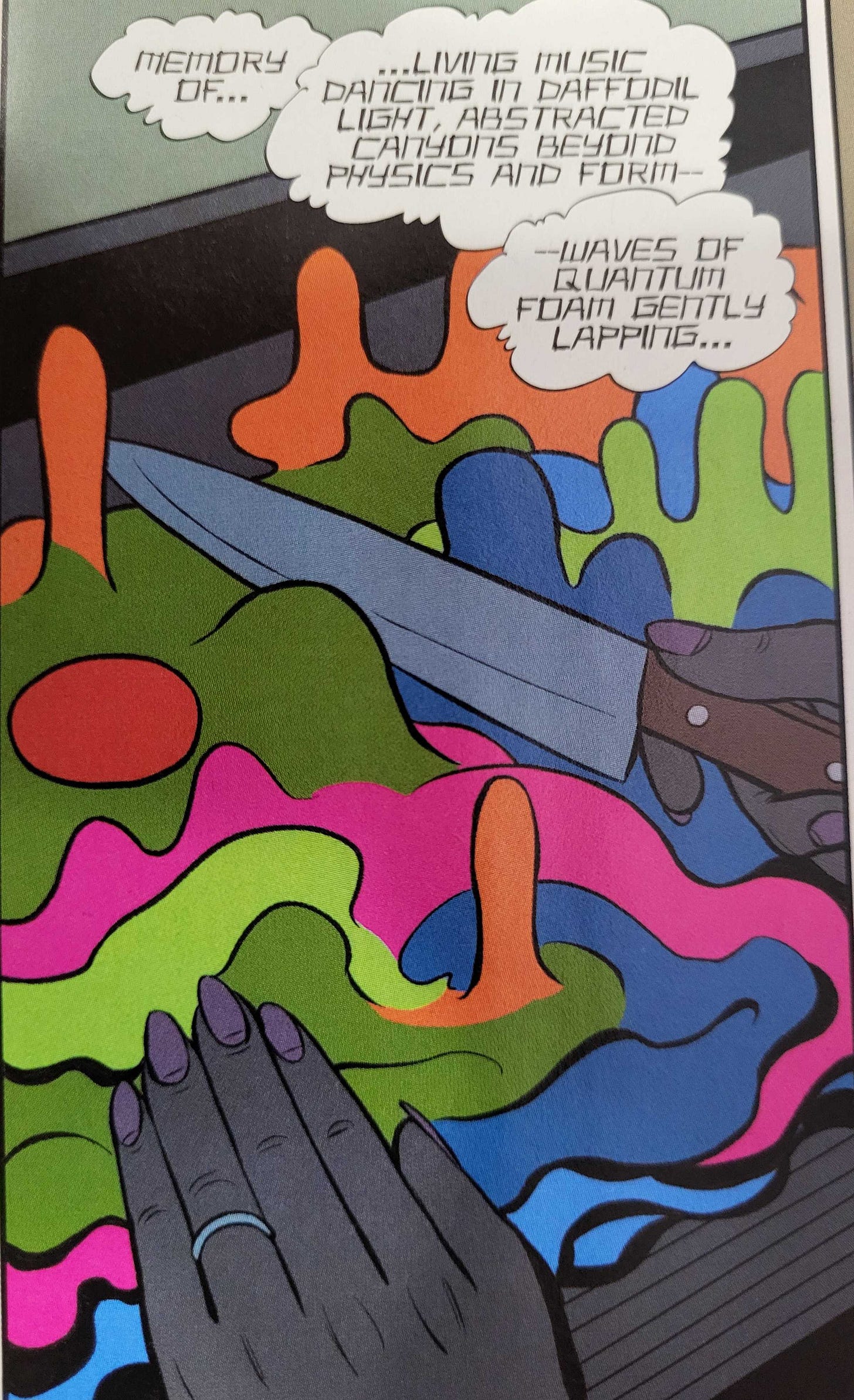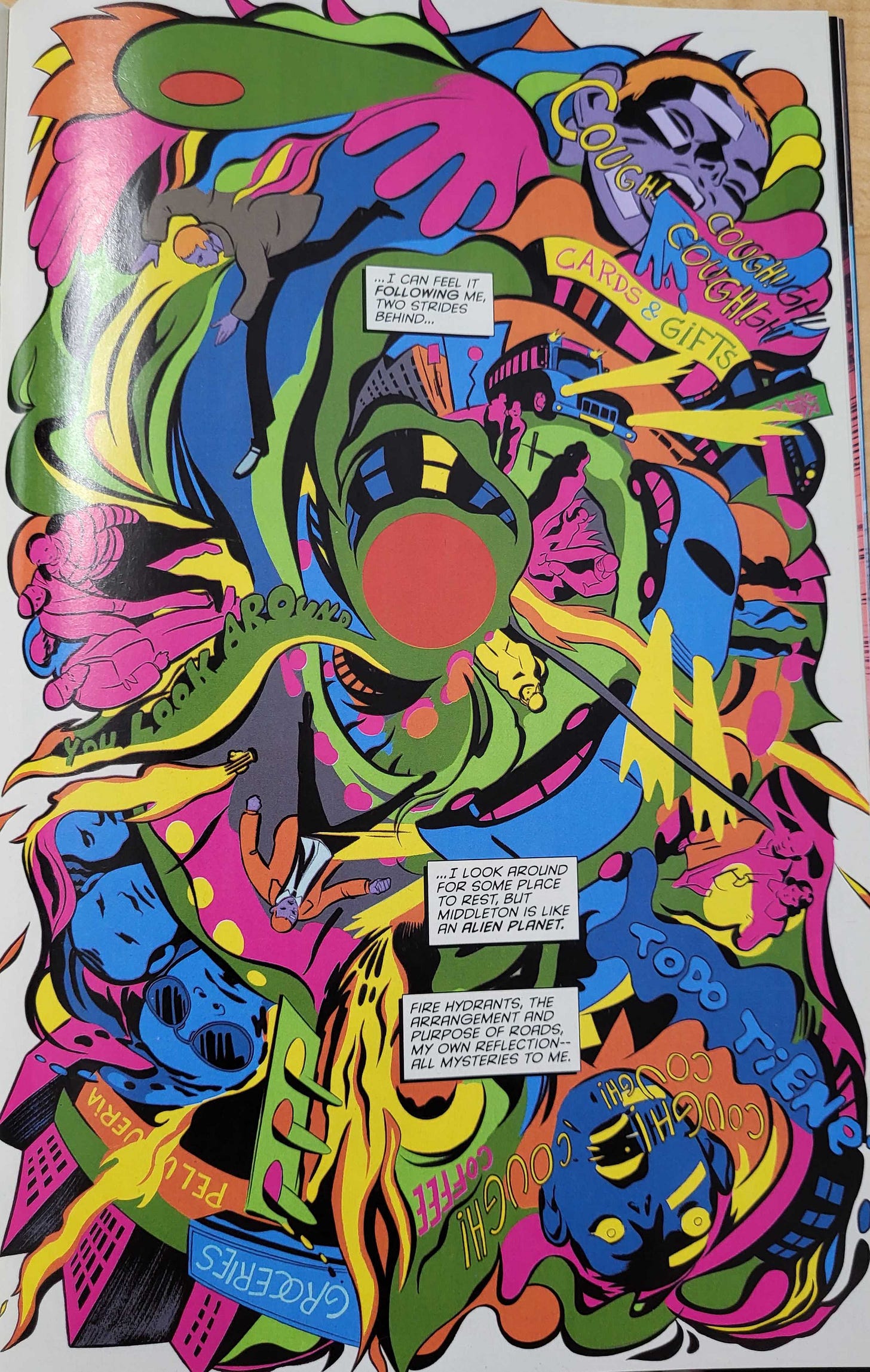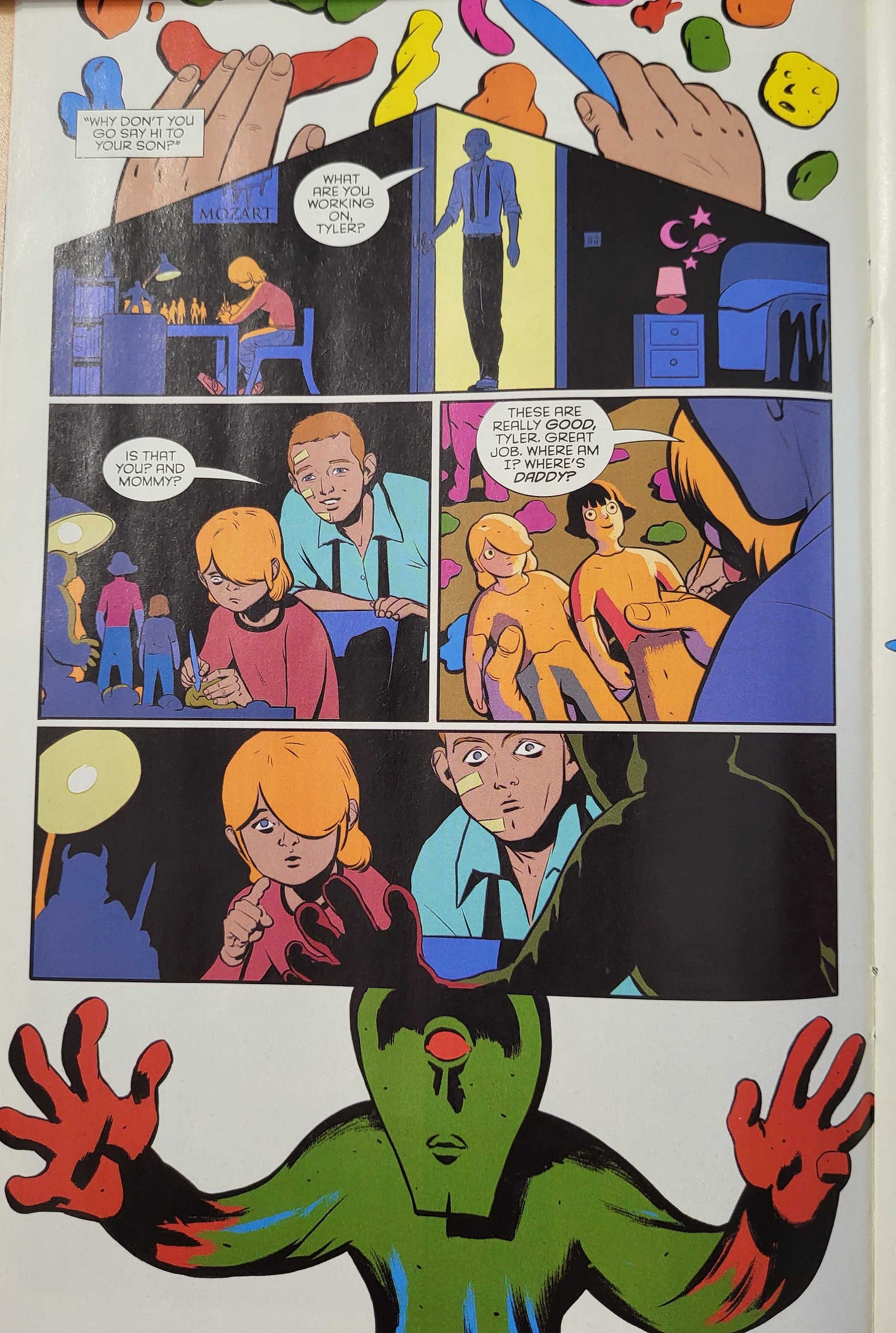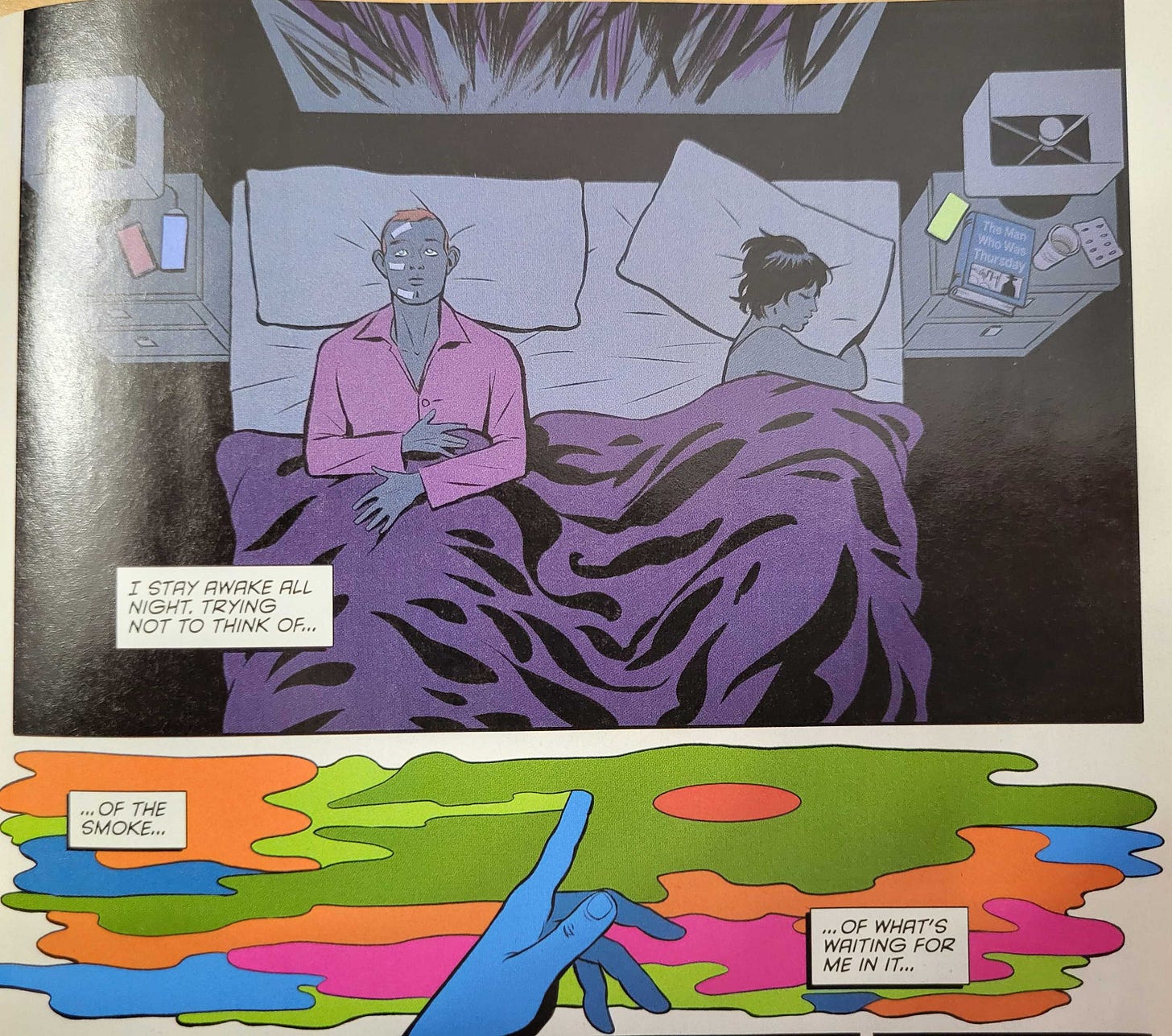The Best Thing I Read This Week: Absolute Martian Manhunter #1
A love letter to color, composition, and the comic book form.
Let me preface this by admitting I possess zero knowledge of Martian Manhunter lore.
I’ve only started to dive into DC’s catalogue, and I haven’t seen a DCU movie since the first Christopher Nolan Batman. My knowledge of DC characters was formed largely by Batman: The Animated Series, the Tim Burton Batman movies, and Christopher Reeve and Dean Cain.
I assumed Martian Manhunter was an alien, because of the name. Possibly he was green? But also I think I’d been getting him mixed up with this guy:
So I’m not sure what piqued my interest enough to pick up Absolute Martian Manhunter #1. Maybe it was the glowing preview I read a few weeks ago in Comics Shop News. Maybe it was that Martian Manhunter seemed (to me) like such a strange choice to lead his own book. But I’ll try any comic for a single issue—and boy am I ever glad I picked up this book.
Color As Narrative Device
Absolute Martian Manhunter #1 tells the story of FBI Agent John Jones’s not-so-slow descent into madness—or Jones’s PTSD-induced realization of his true identity as an interstellar warrior with god-like powers. It all depends on perspective. (More on that in a minute.)
Grab your color wheel, because from the very first page, every panel of this book is a color study. Artist Javier Rodriguez uses color to tell the story as much as thought bubbles and action blocking:
John’s drab normal life is draped in shades of dull blues, pallid lavenders, and night-time grays—occasionally shot through with yellow, the color of light, fire, apocalypse, revelation. The color of his deepest fear. The color of his true self.
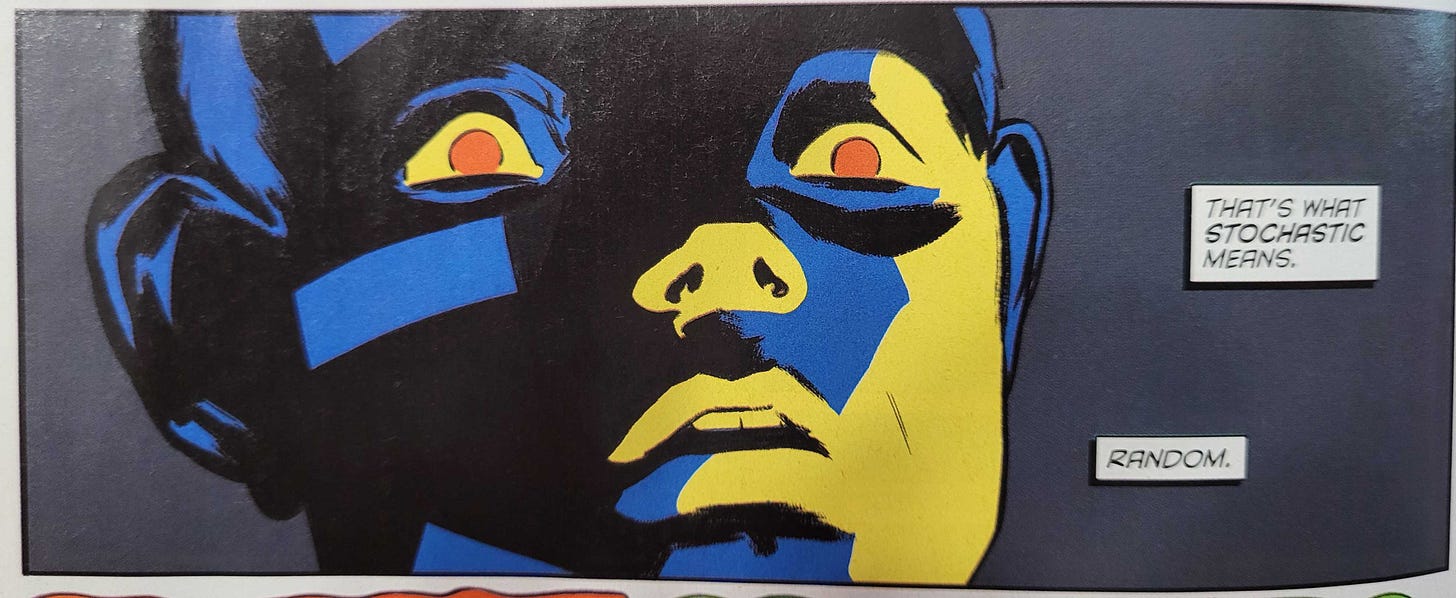
Meanwhile, colors from the Martian Manhunter character palatte—green, pink, cyan, orange—smear through the panels with increasing intensity and focus. At first, they lurk in the smoke and shadows, insubstantial as a whisper:
Then they begin to intrude on John’s thoughts, coloring a kitchen cutting board, people’s auras, even thought bubbles themselves.
By the end of the issue, John has lost his grip on reality; and his world is awash in greens and pinks and oranges, as if someone had upturned paint buckets and let the colors swirl into a chaotic mess.
De-Composition
In addition to color, Rodriguez also wields composition like a scalpel. At the start of the book, panels feature odd viewing angles, evocative of hidden cameras (lots of up-nose shots, for example). It makes me think of spies, surveillance, and—of course—secret identities.
Meanwhile, as we learn more about John, the page layouts move from uninteresting grids of squares to layouts that evoke John’s mood. My favorite is for this conversation between John and his son, laid out in the familiar, even child-like, shape of a house:
Composition becomes more fluid as the book goes on, mirroring the fluidity of John’s sanity, until finally, the end result is incomprehensible—
Or, at least, it’s incomprehensible to John. To us, the reader, it’s entirely comprehensible, as we can see what’s happening to him, and he doesn’t. We know that John is the Martian Manhunter; we understand the meaning behind the colors he sees and why they bleed the way they do.
In this way, Rodriguez makes us an active participant in the narrative. He invites us to be the perspective for John that the character doesn’t have; we can see the bigger picture that he cannot.
This culminates in a genuinely delightful embrace of the comic book’s physical format that I simply cannot bear to spoil for you, so if you’re going to read this book, please buy a physical copy. You really should experience this for yourself.
Oozing Style & Substance
Absolute Martian Manhunter #1 is one of the most beautiful, haunting, incredible pieces of comic book art I have encountered in years. Javier Rodriguez is a genius, and this book is a masterpiece of the medium. I have no idea how #2 could possibly meet the incredibly high bar #1 has set, but I’m excited to find out next month.




